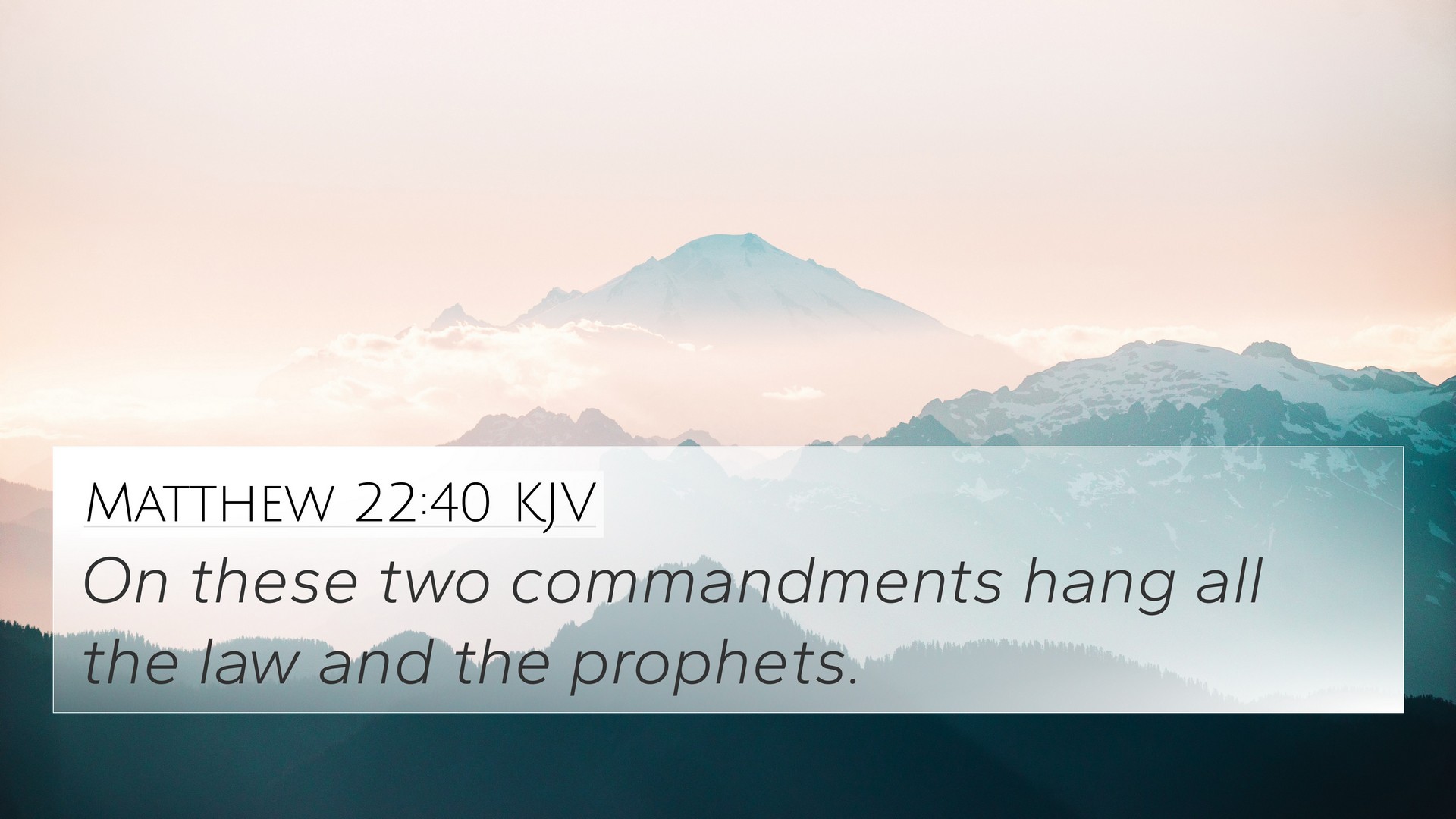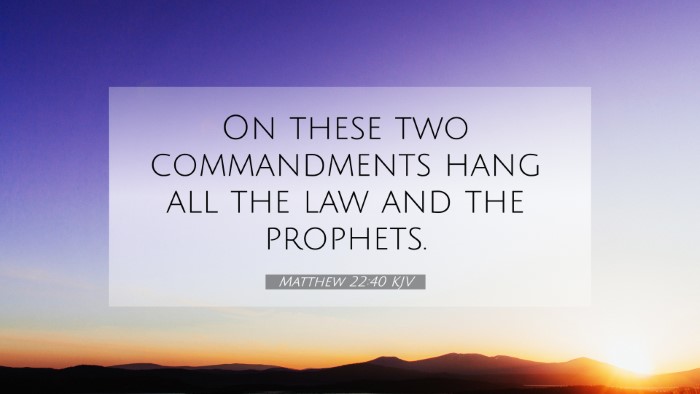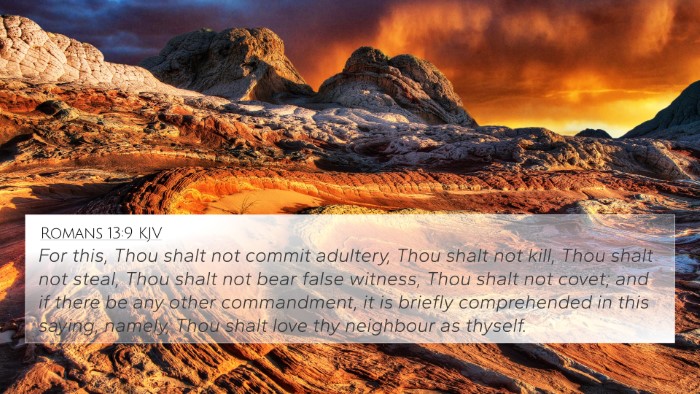Understanding Matthew 22:40
Matthew 22:40 states, "On these two commandments hang all the Law and the Prophets." This profound declaration by Jesus encapsulates the essence of the entire moral law and prophetic messages of the Scriptures.
Overview of the Verse
This verse brings together the two greatest commandments: love for God and love for neighbor (Matthew 22:37-39). In stating that all the Law and the Prophets hang on these commands, Jesus emphasizes the foundational principles that guide not only personal conduct but also the full narrative of Scripture.
Combined Insights from Commentaries
Matthew Henry posits that this summation shows the unity of divine law. It implies that adherence to love fulfills all moral obligations, while Albert Barnes notes that there’s an intrinsic relationship between love and obedience, suggesting that genuine love manifests in action towards God and others.
Adam Clarke highlights that by summarizing the Law, Jesus directs attention to its purpose: a loving God and loving others forms the heart of all spiritual and ethical living. This indicates that righteousness is not just about rules, but about relationships.
Bible Cross-References
- Exodus 20:1-17 - The Ten Commandments emphasize both love for God and love for fellow humans.
- Deuteronomy 6:5 - Commands to love God with all your heart, soul, and strength.
- Leviticus 19:18 - Prohibition against hate and command to love your neighbor as yourself.
- Romans 13:10 - Paul echoes the sentiment that love fulfills the law.
- 1 John 4:20-21 - The connection between love for God and love for others is reinforced.
- Galatians 5:14 - Underlines the idea that the whole law is fulfilled in one word: love.
- James 2:8 - Refers to the royal law of loving one’s neighbor.
Thematic Connections
Matthew 22:40 serves as a thematic bridge linking various biblical texts highlighting the nature of love. These scriptures collectively form an inter-biblical dialogue that illustrates the essence of God's commandments.
Connecting the Old and New Testament
The verse encapsulates the continuity of God's moral expectations from the Old Testament through to New Testament teachings. It illustrates how Christ’s teachings bring clarity and focus to the lengthy legalistic interpretations of the Law.
Comparative Bible Verse Analysis
The relationship between Matthew 22:40 and its cross-references can be analyzed through various lenses, such as the evolution of concepts of love in scripture. The consistent message across these verses affirms love as the bedrock of spiritual and ethical relationships.
Conclusions Drawn from Matthew 22:40
In combining insights from prominent commentaries, we see a multidimensional understanding of what it means to uphold these two commandments. The call to love permeates the Scriptures and compels Christians to reflect this foundational principle in their lives.
- Tools for Bible Cross-Referencing: Utilizing tools like Bible concordances or cross-reference guides can deepen understanding.
- How to Use Bible Cross-References: Effective cross-referencing can enhance sermon preparation and personal study.
- Identifying Connections: Exploring links between various passages provides a richer biblical context.
Related Topics for Deeper Study
Further explorations could include:
- Linking scriptures that pertain to love and obedience.
- Comparative studies of Pauline epistles on the nature of love.
- Interpreting the relationships between prophetic teachings and the commands of Christ.
Key Takeaways
The essence of Matthew 22:40 emphasizes that love is not merely a feeling but a directive that fulfills the entire law of God. Understanding this verse in conjunction with its cross-references allows for a holistic interpretation of biblical mandates.










